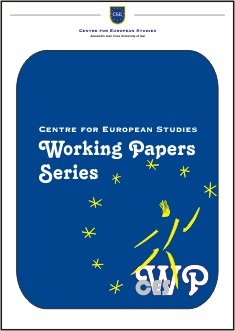REASONS AND EFFECTS OF THE ROMANIAN LABOUR FORCE MIGRATION IN EUROPEAN UNION COUNTRIES
REASONS AND EFFECTS OF THE ROMANIAN LABOUR FORCE MIGRATION IN EUROPEAN UNION COUNTRIES
Author(s): Ramona Frunză, Liviu-George Maha, Claudiu Gabriel MursaSubject(s): Economy
Published by: Editura Universităţii »Alexandru Ioan Cuza« din Iaşi
Keywords: Romanian emigrants; labour market; European Union; migration effects
Summary/Abstract: In the European Union countries and neighboring regions, the expansion will produce a redistribution of the labour force between industries and countries. After the Romania’s adhesion to the European Union, the need for an increased productivity, the lack of capital, the competition on the EU market and the low wages have concurred to the intensification of the migration process of the labour force, especially to the West European countries. As example, from over two millions of Romanians working abroad (almost 10 % from total population), 40% have chosen to work in Italy, 18% in Spain, 5% in Germany. In this context, the questions that appear refer to the following issues: Does a real possibility exist for the emigrants to join the active population of the destination country and being employed according to their competences? How many Romanians citizens continue to stay in a foreign country if their job is not proper with their professional skills? Which countries in European Union apply discriminations on its labour market? Do European Countries usually admit Romanian employees temporarily and expect them to leave in short time if they can’t find a proper job? Which are the socio-economic effects of labour mobility on the Common Market of EU? Which are the forecasts concerning the labour mobility in the next years? In our paper, we try to answer these questions and we also intend to make a comparative analysis concerning - what we consider - some of the most important challenges occurred in Romania’s economy in the context of the mentioned migration process: the adoption of an economic growth model based on the increase of the employed population, the diminution of the discrepancies between our country labour market and the EU target established through Lisbon Strategy, the creation of a new structure of occupation with support in productivity growth and labour price.
Journal: CES Working Papers
- Issue Year: 1/2009
- Issue No: 2
- Page Range: 37-62
- Page Count: 26
- Language: English

